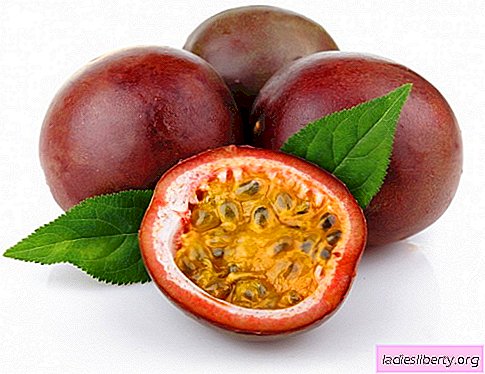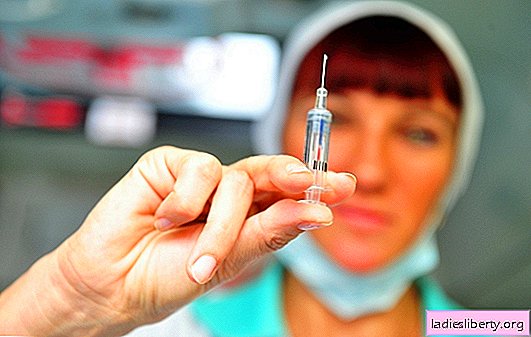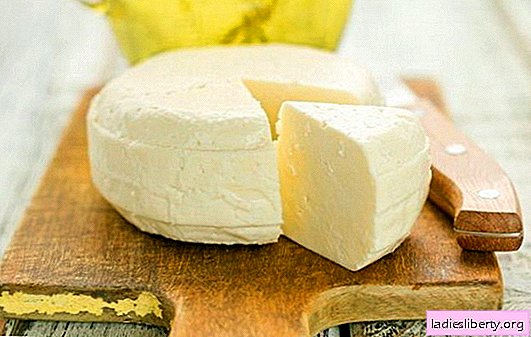
Growing lettuce does not burden the owner of a private house, and there are quite a lot of benefits from this product.
Leaf lettuce contains many minerals and organic acids.
The use of this product in food favorably affects digestion, normalizes and improves metabolism.
Many salads in our country can be grown year-round: during warm time under the open sky, and the winter period in sheltered ground.
This plant supplies a vitamin crop at the very beginning of the year, the salad grows well on the windowsill.
More than a hundred different salads are known, among them there are both heading and non-heading varieties, but only a rosette of leaves, in rooted varieties a rosette first forms, and after that a loose head grows.
Growing lettuce. The choice of planting material, seeds
Types of salad
Lettuce plants are called lettuce, kale, ordinary and cyclone salad, arugula, field salad, etc.

Types of lettuce plants
Uysun. The narrow-leafed asparagus variety, Uisun, is mainly cultivated in Nepal, India, Japan, China and Mongolia. To the table use the leaves and shoots of plants growing to 120 cm in height. The leaves are used exclusively in fresh food, and the stems are both fresh, so they are very tasty in salted or fried form. Fresh leaves of this culture go well with eggs, onions, cucumbers and radishes.
Frize. It is also called curly endive, it is a type of salad chicory leaves of this culture are known to many for their bitterness. The spicy bitterness of this greens goes well with citrus fruits, cheese, shrimp and fish.
Romain. The fibrous greens of this salad form an elongated, loose head of cabbage with a spicy tart taste. Combined with spicy plants and sour cream sauce.
Batavia. Half-lettuce created in France. It has leaves with a wavy green or reddish surface, collected in a large, slightly sprawling rosette. Batavia goes well with nuts and meat.
Escariol. Broadleaf salad, this is a type of salad chicory. The tart taste is successfully combined with ham, cabbage, green peas, bell pepper.
Dubolisty salad. Leaf blades of a plant, green or red, form a rosette slightly resembling an oak leaf. This plant has an original nutty flavor, goes well with fish dishes, mushrooms and tender sauces. The leaves of the plant are sensitive to sudden changes in temperature.
Endive. This type of lettuce forms a rosette of oblong leaves, usually it is grown in autumn and winter. The color of this salad, depending on the variety, may be different - dark green or yellowish. To reduce the bitterness of the leaves, they are soaked in salted water or boiled. Stew the finished products, use for soups, various side dishes and salads, prepare salads from fresh herbs.
Witluf. This cyclic salad is also called French or Belgian endive. It is grown in a special way - they take root crops that have grown completely in the summer, and in the winter period in the absence of light, yellowish or white cabbage is driven out of them. Vitlouf is used in food raw or after baking - bake or stew.
Radiccio. This is a type of ordinary chicory, its heads during growth gradually turn pink. Salad with a bitter aftertaste, well kept in the refrigerator. Use in food fresh, and fried.
Iceberg. This salad is slightly similar to white cabbage. It got its name thanks to California farmers who transported finished products, falling asleep with fine ice. The plant has succulent, light green leaves, with small cloves along the edge. A thick head of cabbage grows up to 1 kg, it is used mainly in dishes with herbs or vegetables.
Coral salad. Reddish or green, curly, delicate leaves with a slightly bitter, nutty flavor are well stored. This kind of salad goes well with fried meat.
Growing lettuce. Sowing (dates, top dressing, shelter, temperature, soil, etc.)
Salad in its agricultural technology is one of the most undemanding crops. Due to the short growing season, plants are almost not affected by diseases and pests. The complexity of the salad culture includes only laborious sowing and the need to break through seedlings or dive them when grown using seedlings.

Sprouted Salad Seeds
You can sow lettuce in 10-12 days, but take into account that starting from the end of May, plants can form inflorescences and greenery will grow bitter. It can also happen when sowing in dry soil, for this reason, resistant varieties are sown all summer. Although the salad can withstand temperatures well, it is advisable to sow it under agrofibre or film when sowing early (after snow melts). Between the plants leave spaces for wrought varieties of 10-12 cm with row spacing of 30 cm, for half-wedged spaces of 8-10 cm and for leaf varieties of 4-5 cm with row spacing of 20 cm, sowing depth 1.5-2 cm.
For growing lettuce, do not use saline and saline areas with high acidity (the most suitable acidity for this crop is 6-7.2 pH) and on clay and heavy soils. In general, this culture is unpretentious, a good crop can be grown by fertilizing with mineral fertilizers in areas with a high humus content.
The site needs to be prepared long before sowing, best of all - in the autumn period. First you need to let perennial weeds grow (bindweed, wheatgrass, mustard and sow thistle) and then treat them with a herbicide. Then they wait two weeks, allowing the herbicide to be absorbed into the rhizome. After that, you can perform the main soil treatment on the site.
Acidic soil is lime, and gypsum is applied on solonetzes, if there is little potassium and phosphorus in the soil, then appropriate fertilizers can be added for digging. The soil is dug up to 22-25 cm and immediately leveled, and harrowed.
Since the lettuce plant develops rapidly, and it is small, the amount of nutrients used to form the vegetative mass is small, and plants need to be fed in small quantities. This culture is poorly developed both with an excess of nutrients in the soil, and with their lack. In the hot season, it is important to monitor the availability of calcium - this will help to avoid internal necrosis.
It is necessary to water the salad on time, during the heat they moisturize the soil under the plants every day, if it's cool - once in two or three days. Leaves of lettuce should not be wetted so as not to provoke the development of fungal diseases, it is best to water the plants with drip irrigation.
Transplanting
Lettuce seedlings are grown only in pots or in peat cubes without transplanting, the reason is that the root system of seedlings of this culture does not tolerate damage. It is necessary to plant ready-made seedlings of lettuce very finely - so as not to completely immerse the earthen lump, leaving 0.5-1 cm of its height on the surface in the soil. If the seedling is planted deep, then the lower leaves can rot. If it was not possible to make potash or phosphorus fertilizers on the site, then you can make them during planting seedlings.

Seedling ready for planting
It is better to choose varieties resistant to the most common disease of this culture - bremya, and to the most dangerous pest - aphids of Nazonovia. This will reduce the number of chemical treatments of plants from pests and diseases, and this is important for a crop with a short growing season.
Harvesting
Gather salad greens in the morning, before the onset of heat, it is desirable to immediately cool the resulting products to 2-5 degrees. So the salad is better transported and stays fresh for 12-15 days.
Seedling salad
With seedlings, it is easier to grow lettuce much earlier than when sowing in the soil and at the same time avoid laborious thinning. In the last days of February, sow one seed in pots or cups. After the emergence of seedlings, they must be immediately transferred to a well-lit but cool room, maintaining there 12-15 degrees in the daytime and 8-10 degrees in the night. After the formation of 1-2 real leaves, plant the seedlings under temporary shelter, removing weak seedlings. Fertilizing lettuce seedlings can be done directly on the bed in two weeks (if the plot has not been fertilized in spring).
The main pests and ways to combat them
The lettuce plant forms a compact bush of the lower leaves, on a short stem, which causes the retention of moisture and subsequently infection by diseases. The most common lettuce diseases:
• Seedlings - black leg;
• Adult plants - gray and white rot, downy mildew;
• Physiological damage to the plant - burned edges of the leaf plate.
Blackleg. The appearance of rot on seeds and seedlings of lettuce is possible when creating conditions that inhibit the germination of seeds, with poor aeration and high humidity. To reduce the risk of seedling disease, you need to sow the seeds in disinfected and steamed soil mixtures, perlite sand can be used. A month before sowing, the seeds are treated with special dressers.
Gray rot. The disease affects the green mass of the plant, necrotic spots form on the leaves and stems in areas of contact with moist soil. Gray rot develops in cloudy weather and high humidity. When harvesting, the lower infected leaves are necessarily removed and burned. The disease is very dangerous in the pre-harvest period.
Downy mildew. The parasitic fungus only affects the lettuce and its related crops. It remains for a long time on weeds or after-harvest residues of lettuce. In wet weather, the fungus penetrates the tissues of the plant and spreads inside it. The most effective methods are the removal of plant debris, sowing resistant varieties, the destruction of weeds, maintaining the microclimate.
White rot. It successfully develops with a permanent culture, without soil treatment against infection. Plants fall ill in the initial phase of growth and after closing the leaves of the plant rosette. The disease affects the leaves lying on the soil, and the stem near the attachment to the stem of the lower leaves. Watery rot is visible on the leaves, spreading to the base of the leaves and stem, the tissues turn into a soft mass. The spores of the fungus remain in the soil for a long time and, in addition to lettuce, can affect cucumbers and tomatoes.
The most effective way to combat is the disinfection of soil with steam. The fight against this disease is to maintain soil moisture within 65-70% of HB and a good ventilation device.
Leaf edge burn - salad disease of a physiological nature. You can detect it by the appearance of a brown color along the edge of the sheet and the subsequent death of the tissues. Such symptoms can be detected on both several and many leaves of a lettuce bush. This disease can be a consequence of a violation in the care of plants (sudden changes in humidity and temperature, drying out of the substrate). Different varieties of lettuce differ in disease resistance.
Pests
The growth period of the salad is very short, and the bulk of the pests do not have time to harm it. But with the onset of spring, in the houses they begin to open windows for ventilation, in which pests fly into the streets. These are mainly aphids, sucking sap from plants, which greatly inhibits them. During feeding, these aphids secrete a sweet liquid - a pad, which serves as a substrate for the development of a sooty fungus.

Aphids on lettuce
In open ground, the fight against aphids is carried out mainly by the agrotechnical method, which consists in the destruction of weeds near the beds with lettuce. A chemical method is also used for this - preventive spraying of seedlings with a 0.10% phytoerm solution in the phase of 2 real leaves.
The greenhouse whitefly also harms the salad, its larvae inhibit the young plant, and at the same time serve as a carrier of viral infection.
Ways of struggle: extermination of weeds near the beds with lettuce; sterilization of the soil mixture; insecticide treatment of seedlings and greenhouse constructions; use of entomophages and glue traps.











